Introduction
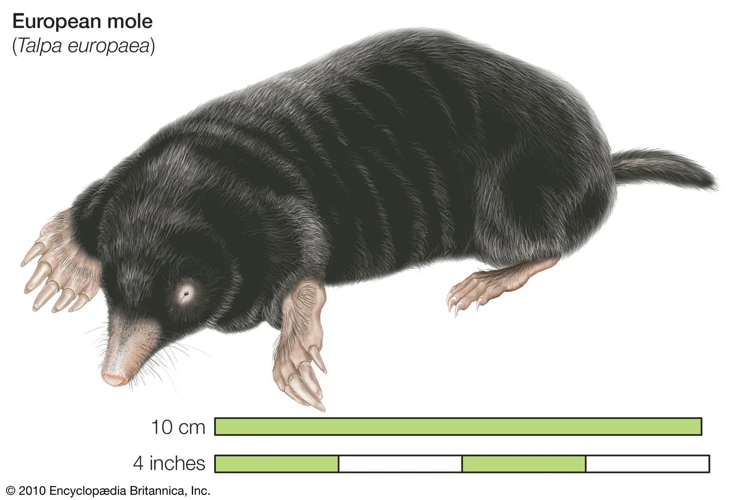
The mysterious world beneath our feet is home to a plethora of creatures, some of which may be hiding in plain sight. Among these creatures are moles, fascinating creatures with a surprisingly intricate internal anatomy. As we delve deeper into the mole’s internal world, we’ll gain a better understanding of the skeletal system, muscular system, digestive system, respiratory system, and reproductive system. Each of these systems plays a crucial role in the mole’s survival and adaptation underground. In this detailed article, we’ll explore the internal anatomy of moles step-by-step, highlighting their unique features and how they have adapted to life beneath the surface.
What are moles?
Moles are small, burrowing mammals that belong to the Talpidae family. They are known for their distinctive physical characteristics and unique behaviors that enable them to live underground. Moles have cylindrical bodies that measure between 12-16 cm in length with velvety fur typically dark gray, brown, or black in color. Their fur is of great significance, as it allows them to move easily through soil without it hindering their mobility. The snout of a mole is long and pointed, and their tiny eyes and ear canals are often concealed by fur. Moles are also recognized for their strong forelimbs, large claws, and unique teeth, all of which help them to dig tunnels and forage for food. In addition to their strong forelimbs and claws, moles rely on their hearing to navigate through tunnels and detect potential predators. It is essential to understand the physical characteristics of moles, as well as their behaviors, as this knowledge is crucial in mole control.
Why is it important to understand their anatomy?
Understanding a mole’s internal anatomy is crucial for several reasons. Firstly, it helps in mole control. Knowing the anatomy of moles can help in identifying the most effective control methods to manage mole damage. Secondly, understanding their anatomy can provide insights into their behavior and lifestyle. For instance, understanding their digestive system can help in choosing the most appropriate bait for trapping. Knowledge of their respiratory system is significant because moles have adapted to underground living, which affects their breathing process. Additionally, knowledge of their skeletal and muscular systems provides insights into their digging behavior, which is essential in mole control.
For example, their strong forelimbs and claws help in digging tunnels and creating a network of underground burrows. Understanding the anatomy of their teeth and snouts also provides insights into their feeding habits and behavior. An understanding of their reproductive system can help control their population. Understanding a mole’s internal anatomy helps in developing effective control measures to manage their impact on lawns and gardens.
To learn more about different kinds of moles and their physical characteristics, visit /physical-characteristics-of-moles/.
Skeletal System
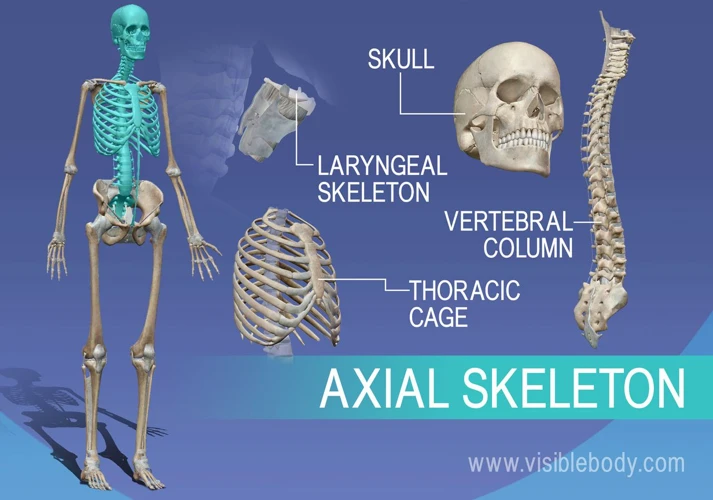
The internal anatomy of a mole is a complex system that allows these creatures to thrive in their underground habitat. One crucial aspect of their anatomy is their skeletal system, which provides support to their body and facilitates movement. Understanding the bones and muscles of moles can give us insights into their unique adaptations and behavior. For example, their strong forelimbs and claws are crucial for digging tunnels, a behavior that distinguishes different types of moles. Additionally, moles’ teeth play an important role in their ability to consume a wide variety of prey. Let’s take a closer look at the fascinating skeletal system of moles.
Bones and their role
The bones in a mole’s body are specifically designed to allow them to burrow underground with ease. They have a cylindrical body shape, with short and stocky legs, that are adapted to life underground. The bones in their forelimbs are the most prominent feature of their skeletal system, as they are incredibly strong and equipped with powerful claws.
The bones in their forelimbs play a crucial role in:
| Function | Description |
|---|---|
| Burrowing | They allow moles to easily burrow through tough soil and create intricate tunnels and networks. |
| Pushing through soil | When a mole needs to push through dense soil, their forelimbs provide the necessary support and strength to help them accomplish the task. |
| Catching prey | The strong bones in their forelimbs make it easy for moles to capture and kill their prey, which they do by using their powerful claws to dig through the soil quickly and efficiently. |
The bones in a mole’s body play an essential role in the animal’s ability to effectively navigate and survive in an underground environment. It’s fascinating to understand how each part of their anatomy is uniquely designed to help them thrive in their habitat.
Muscles and their role
The muscles in a mole’s body play a crucial role in its survival and daily activities, including burrowing, foraging, and self-defense. These muscles are highly specialized and adapted for underground living. Let’s take a closer look at the different muscles in a mole’s body and their functions.
| Muscles | Role |
|---|---|
| Dorsal muscles | These are the superficial muscles that run along the back of the mole. They are responsible for maintaining the posture of the mole’s body while tunneling through soil. |
| Forelimb muscles | The muscles in the forelimbs of moles, especially the biceps and triceps, are very strong and well-developed. They provide the necessary force to dig through soil and create tunnels. |
| Chest muscles | The chest muscles are important for respiration and help to move air in and out of the lungs while the mole is tunneling underground. |
| Abdominal muscles | These muscles work together to help the mole dig through soil by flexing the body while pushing soil out of the way. |
| Eye muscles | The extraocular muscles are responsible for controlling the movement of the mole’s eyes. A mole’s vision is not well-developed, but these muscles help to make quick movements to detect predators. |
Understanding the role of these muscles is essential in mole control. For example, trapping techniques must take into account the muscular strength and adaptability of a mole’s forelimbs and claws. Additionally, knowing the eye muscles’ function will aid in understanding how moles navigate their environment and avoid potential risks.
Anchored link: Mole’s strong forelimbs and claws
Muscular System
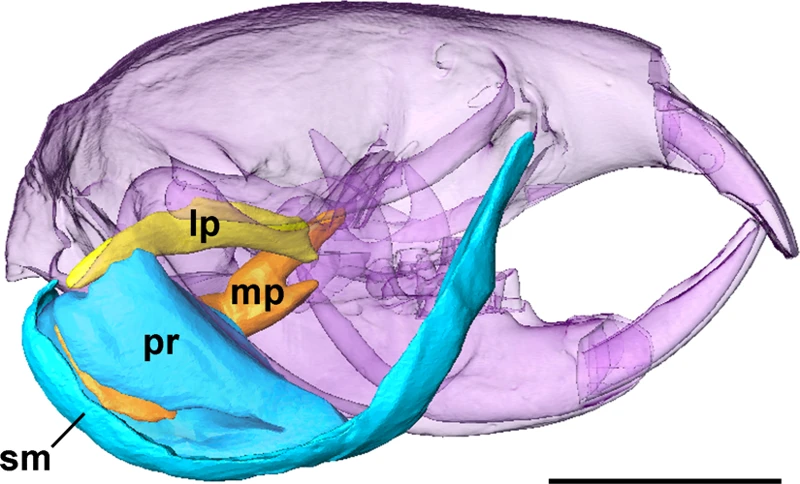
Exploring a mole’s internal anatomy can give us a better understanding of these elusive and fascinating creatures. While moles are known for their impressive digging abilities, their muscular system plays a crucial role in their survival. From their strong legs to their powerful jaws, moles’ muscles are specifically adapted for a subterranean lifestyle. In this section, we’ll take a closer look at the different muscles found in a mole’s body and how they contribute to their abilities. To learn more about other unique aspects of moles, such as their hearing abilities or the significance of their fur, check out our other articles on different types of moles and mole fur significance.
Muscle structure and function
Muscles play a key role in a mole’s digging and burrowing activities. These activities require a lot of energy, and muscles provide that energy by contracting and relaxing. Understanding the structure and function of a mole’s muscles is essential for understanding their behavior and habits.
Muscle structure: Moles have a complex and well-developed muscular system that is adapted to their underground lifestyle. They have several layers of muscles in their bodies, each with a specific function. The outermost layer of muscles is responsible for controlling the movements of their limbs and tail, while the inner layers of muscles are responsible for digging and burrowing.
| Muscle Layer | Location | Function |
|---|---|---|
| Superficial (outermost) layer | Limbs and tail | Controls movement of limbs and tail |
| Middle layer | Body and limbs | Supports and stabilizes body during digging and burrowing |
| Deep (innermost) layer | Shoulder, back, and neck | Mainly responsible for digging and burrowing |
Muscle function: Muscles in moles work in tandem with other body systems to help them dig and burrow. As mentioned earlier, moles have several layers of muscles, each with a specific function. The superficial layer of muscles controls the movement of their limbs and tail, allowing them to move through the tunnels they create. The middle layer of muscles supports and stabilizes the body during digging and burrowing, preventing it from collapsing. Finally, the deep layer of muscles is responsible for the actual digging and burrowing, using a combination of powerful contractions to move earth out of the way.
Understanding the structure and function of a mole’s muscles is essential for controlling their behavior and population. By disrupting their ability to dig and burrow, we can prevent them from damaging gardens, lawns, and crops. For example, one way to discourage moles from burrowing in a specific area is to create barriers or install mesh to prevent them from entering the area. Additionally, understanding how moles use their muscles to regulate their body temperature can help us create more effective traps and repellents.
How muscles help in mole control?
The muscles play a significant role in mole control. The table below shows the different muscles in a mole’s body and their specific functions:
| Muscles | Functions |
|---|---|
| Forelimb muscles | Aid in digging and tunneling through soil |
| Shoulder muscles | Provide stability to the shoulder during digging movements |
| Trunk muscles | Assist in lateral movement and help with turning underground |
| Hindlimb muscles | Provide power for pushing soil backward during digging |
The muscles in a mole’s forelimbs are highly specialized for digging and tunneling through soil. Their shoulder muscles help stabilize the shoulder joint while doing so. On the other hand, the trunk muscles assist in the lateral movement and turning of these burrowing animals while underground. Meanwhile, the hindlimb muscles provide the power necessary for pushing soil backward during digging.
These muscles work together to help moles tunnel through soil and search for food. Understanding the function of each muscle is crucial in identifying the movement patterns of moles, which can aid in mole control efforts. For instance, if you want to prevent moles from digging in a particular area, you can install mesh barriers that make it difficult for moles to dig their way through.
Knowing how the muscles work in a mole’s body can also help in designing traps and other mole control methods that effectively capture or repel moles. By understanding the mole’s body, including its muscles, professionals in pest control services can create strategies that aim to prevent mole infestation without causing unfavorable environmental impacts.
Digestive System
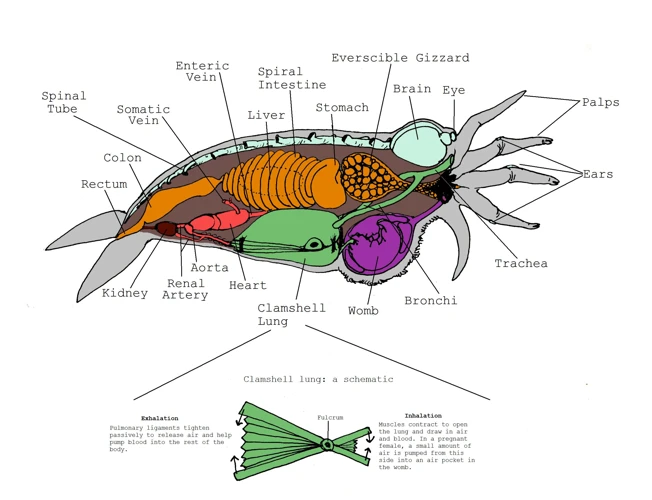
As we explore the internal anatomy of moles, it’s impossible to overlook the importance of their digestive system. Like all living creatures, moles need nutrients to survive and thrive. In this section, we will take a closer look at the anatomical features of mole’s digestive system and understand how their diet affects their internal organs. It is fascinating to see how these adaptations enable them to dig and burrow more efficiently to find food. We will discuss the role of their digestive system in mole control, and how understanding it can help control their population.
Anatomical features of a mole’s digestive system
The digestive system of a mole is crucial for its survival, as it enables the digestion of food and extraction of nutrients. Let’s take a closer look at the anatomical features of a mole’s digestive system.
One of the key features of a mole’s digestive system is its long and muscular esophagus, which is used to propel food towards the stomach. Once in the stomach, powerful digestive enzymes and acids break down the food. The stomach is followed by the small intestine, where most of the nutrient absorption occurs. The small intestine is highly folded and has a large surface area, allowing for maximum nutrient absorption.
An important anatomical feature of a mole’s digestive system is its caecum, a pouch located near the junction of the small and large intestines. The caecum helps to ferment and digest tough plant material that the mole eats, resulting in the production of short-chain fatty acids that can be absorbed by the mole’s body. This adaptation allows them to extract more nutrients from their diet than they would otherwise be able to.
One peculiar feature is that a mole’s teeth are not designed for chewing, but only for capturing and killing prey. Their digestive system has to work harder to compensate for the lack of chewing. Also, the tail of the mole plays a significant role in their digestion. The tail is used to store fat reserves that can be used when food is scarce.
Understanding the anatomy of a mole’s digestive system is important for several reasons. Firstly, it helps us to understand the unique adaptations of these creatures and how they have evolved to survive in their environment. Secondly, it helps us to understand what they eat and how their diet affects their overall health. By understanding the digestive system of moles, we can better manage and control their populations.
References:
What moles eat and how it affects their anatomy?
Moles are insectivores, which means they primarily feed on insects and other invertebrates. Their diet is high in protein, which is essential for maintaining their muscular and skeletal systems. In fact, moles have a very high metabolic rate in order to sustain their active lifestyle and rapid digging capabilities.
Below is a table that shows some of the common foods that moles eat and how they affect the anatomy of a mole:
| Food | How it affects the anatomy of a mole |
|---|---|
| Earthworms | Provide a good source of protein for muscle and skeletal development. Also contain calcium, which is important for bone health. |
| Grubs and beetles | High in protein and fat, which help maintain energy levels and promote muscle growth. |
| Ants and termites | Rich in protein and fiber, which promote muscle and digestive health. Also contain vitamins and minerals that are essential for overall health. |
| Plant roots and tubers | Although not a significant part of their diet, moles may occasionally eat plant matter for additional nutrients and fiber. |
It’s important to note that moles have a unique digestive system that allows them to extract as much nutrition as possible from their food. Their small intestine is much longer than other similar-sized mammals, allowing for greater absorption of nutrients. This adaptation helps them to maintain their high energy requirements.
Understanding what moles eat and how it affects their anatomy is important in mole control. By controlling the population of their primary food source, such as grubs and beetles, it may be possible to prevent the damage caused by moles in lawns and gardens.
Respiratory System
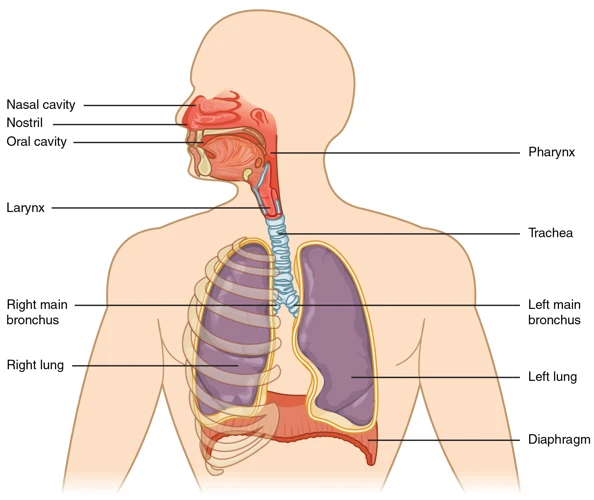
Breathing is one of the essential functions that keeps a mole alive, and as with many other aspects of their anatomy, their respiratory system is adapted specifically to their underground way of life. The respiratory system of these subterranean creatures is unique, with some interesting features that help them thrive in their environment. In this section of the article, we’ll take a closer look at how moles breathe, as well as how their respiratory system has adapted to life underground. Additionally, we’ll highlight how their respiratory system functions in conjunction with other sensory organs like their snout and ears, and how moles use these organs to navigate their surroundings.
How do moles breathe?
Moles have a unique respiratory system that allows them to survive their underground lifestyle. In order to understand how moles breathe, we need to take a closer look at their anatomy.
One of the key adaptations of moles is their enlarged nasal cavity, which allows them to take in more oxygen as they move through the soil. According to research by Timothy J. Wright, “the enlarged nasal conchae and turbinals in moles…provide the largest proportional surface area for gas exchange among mammals.” This means that moles are able to maximize the amount of oxygen they can extract from the air.
Another important aspect of mole respiration is their ability to regulate their breathing depending on their activity level. When moles are excavating tunnels, for example, they are exerting more energy and require more oxygen. In contrast, when they are resting, they are able to slow down their breathing rate and conserve oxygen.
Moles have a highly specialized respiratory system that allows them to thrive in their subterranean environment. By utilizing their enlarged nasal cavity and regulating their breathing, they are able to efficiently extract the oxygen they need to survive.
Sources:
| Source | Link |
|---|---|
| Wright, Timothy J. | https://www.jstor.org/stable/10.1644/1545-1542-83.3.665 |
| Whitaker Jr., John O. | https://academic.oup.com/jmammal/article/77/4/1117/874905 |
| Peterson, Kathryn J. | https://www.sciencedirect.com/science/article/abs/pii/S0018506X20303219 |
Their respiratory system’s adaptation for underground living
Moles have a unique respiratory system that is specially adapted for their life underground. In order to survive in soil environments, moles have developed several adaptations. As moles spend most of their time below ground, they require a means of obtaining enough oxygen to survive. However, the low levels of oxygen present below the ground require special adaptations to the respiratory system in order to support gas exchange.
One way moles have adapted their respiratory system is by having a very high breathing rate, which allows them to take in enough oxygen to survive in environments where oxygen levels are low. Additionally, moles have highly efficient lungs with thin walls that enable them to rapidly exchange gases despite the low concentration of oxygen.
Moles have a highly muscular diaphragm that allows them to forcefully exhale carbon dioxide and other waste gasses from their lungs. They also have a highly vascularized nostril system that helps to absorb additional oxygen from the soil while digging.
The structure of moles’ lungs and the efficiency of the respiratory system help them to survive in their subterranean environments. This adaptation helps to reduce their need to come to the surface for oxygen, thus minimizing their vulnerability to predators.
Table:
| Respiratory System Adaptations for Underground Living |
|---|
| High breathing rate |
| Efficient lungs with thin walls |
| Highly muscular diaphragm to forcefully exhale waste gasses |
| Highly vascularized nostril system for additional oxygen absorption |
Reproductive System
As we delve deeper into understanding a mole’s anatomy, we cannot overlook their reproductive system. This intricate biological system plays a crucial role in the mole’s survival and population growth. Exploring the fascinating details of the reproductive system can provide valuable insight into mole control and management. Let’s explore the unique features and adaptations of a mole’s reproductive system that make them highly efficient diggers and breeders.
Facts about mole’s reproductive system
Moles have a unique reproductive system that is different from other animals. Here are some facts about their reproductive system:
| Fact | Description |
|---|---|
| Gestation period | Moles have a gestation period of about 42 days, and can have up to 7 offspring in one litter. |
| Reproductive maturity | Moles reach reproductive maturity at around 1 year of age. |
| Monogamous | Moles are monogamous and mate for life. |
| Seasonal breeding | Moles typically breed in the late winter and early spring. |
| Underground breeding | Moles breed underground, in the safety of their tunnels. |
| No external genitalia | Male moles do not have external genitalia, making it difficult to identify their sex. |
| Penis bone | Male moles have a penis bone, also known as a baculum, which is unique to their species. |
Understanding the reproductive system of moles is crucial for mole control because it allows us to target their breeding habits. By preventing mating and reproduction, we can effectively reduce the mole population in a given area. Additionally, knowing the gestation period of moles can help us time our control measures appropriately for the best results.
Why understanding their reproductive system is crucial in mole control
Understanding the reproductive system of moles is crucial for effective mole control because it can help prevent an infestation. Moles have a high reproductive rate, and a single female mole is capable of producing several litters each year.
Table: Mole Reproductive System
| Reproductive Feature | Description | Importance in Mole Control |
|---|---|---|
| Sexual Dimorphism | Male and female moles can be distinguished by their physical characteristics | Knowing the differences helps identify gender-specific patterns and mating behaviors |
| Mating Behaviors | Moles engage in complex courtship rituals and mate with multiple partners | Understanding mating behaviors can help prevent reproduction and control populations |
| Gestation Period | Mole gestation lasts for approximately 4-6 weeks | Knowing gestation periods is crucial for targeting breeding cycles and controlling populations |
| Litter Size | Moles typically have 3-5 offspring per litter, but can have up to 7 | Understanding litter sizes helps predict population growth and target breeding cycles |
| Breeding Season | Mole breeding season typically occurs between February and June, but can vary depending on location and climate | Knowing the breeding season helps target populations at their most vulnerable stages |
By understanding the reproductive system of moles, we can target breeding cycles and control populations before they become out of hand. This can prevent damage to lawns, fields, and gardens caused by their digging and tunneling. Knowing their mating behaviors, gestation periods, litter sizes, and breeding season can help establish effective control methods that decrease the number of moles in an area. Understanding the reproductive system of moles is a critical part of effective mole control.
Conclusion
As we come to the end of our exploration into the internal anatomy of moles, it is clear just how intricate and fascinating these creatures are. Their skeletal, muscular, digestive, respiratory, and reproductive systems work in tandem to enable them to thrive in the underground environments they call home. By now, it’s also clearer as to why understanding their anatomy is crucial for effective mole control. Let’s now summarize the key points we’ve covered and explore further the ways in which our newfound knowledge can help us better manage mole populations in our environment.
Summary of mole’s internal anatomy
A summary of a mole’s internal anatomy is important in understanding how this creature functions in its habitat. A mole has several body systems that allow it to thrive underground, where it spends most of its life. Below is a table summarizing the different body systems in a mole’s internal anatomy and their roles:
| Body System | Function |
|---|---|
| Skeletal System | Provides structure and support for the mole’s body. Helps with movement and mobility. |
| Muscular System | Works with the skeletal system to enable movement and mobility. Helps with digging and burrowing. |
| Digestive System | Processes food and extracts nutrients for energy. Helps with waste elimination. |
| Respiratory System | Enables breathing and the intake of oxygen for bodily processes. |
| Reproductive System | Facilitates breeding and the continuation of the mole species. |
Each of these systems plays a crucial role in the survival of the mole. Understanding the intricacies of their internal anatomy can yield important insights for mole control and management.
How knowledge of mole’s anatomy helps with mole control?
One of the most essential tools in controlling moles is a thorough understanding of their internal anatomy. A deeper understanding of their physical makeup allows for more effective and humane control methods. Here are some ways in which knowledge of a mole’s anatomy can help with mole control:
| Knowledge of skeletal system | Knowing the location and function of a mole’s bones helps in identifying the most effective traps or barriers to use, as well as the location of vital organs that must be avoided. |
| Understanding muscular system | Knowledge of mole’s muscular system helps determine the strongest and most vulnerable points on their body. This information can be used to identify the best placement for traps and to develop effective control methods that quickly immobilize the mole without causing excessive harm. |
| Familiarity with digestive system | Moles have a voracious appetite and can consume their own body weight in food each day. Knowledge of their digestive system, particularly what they eat and how it affects their anatomy, allows for the development of baits and lures that are particularly effective in attracting and catching them. |
| Understanding respiratory system | Moles spend the vast majority of their time underground, and their respiratory system is adapted to function in a low-oxygen environment. Knowledge of their respiratory system allows control methods to be developed that do not cause excessive damage to these adaptations. |
| Familiarity with reproductive system | Understanding the reproductive system of moles allows for the identification of the best times to implement control measures, as well as the creation of targeted control programs that take into account the gender and age of the mole population in a specific area. |
Knowledge of the mole’s internal anatomy allows for the development of more effective and humane control methods. It’s crucial to consider a mole’s anatomy when implementing control measures, as it can significantly impact their success. By understanding how each system works, traps and other control measures can be designed for maximum efficacy and minimum harm.
Frequently Asked Questions
What is the difference between moles and shrews?
Moles and shrews are two different species of mammals. Moles are adapted for underground life, with strong limbs for digging and a cylindrical body shape. Shrews are not adapted for digging but have a slender body and a pointed snout.
Do moles have good eyesight?
No, moles do not have good eyesight. Their eyes are very small and poorly developed, and they rely more on their sense of touch and smell to navigate their environment.
What kinds of muscles do moles have?
Moles have both skeletal and smooth muscles. Skeletal muscles are responsible for movement and locomotion, while smooth muscles are found in the digestive system and other organs.
Can moles swim?
No, moles are not good swimmers. Their body is not well adapted for swimming, and they prefer to live in dry underground burrows.
What is a mole’s diet?
Moles primarily eat insects, worms, and other small invertebrates that they find in their underground tunnels. They have a high metabolism and need to eat frequently to maintain their energy levels.
How do moles breathe underground?
Moles have a sophisticated respiratory system that allows them to breathe underground. Their lungs are able to extract oxygen from the air in their tunnels, and they have a specialized hemoglobin that can bind to oxygen tightly.
What is the purpose of a mole’s tail?
A mole’s tail is used for balance and navigation in their underground tunnels. It can also be used to push dirt out of the way while digging.
Are moles social animals?
No, moles are solitary animals and prefer to live alone in their own burrow systems.
Do moles hibernate during the winter?
No, moles do not hibernate. They are active year-round and need to eat regularly to maintain their high metabolism.
How do moles reproduce?
Moles reproduce sexually, with males and females mating in the spring. The female gives birth to a litter of 2-7 young after a gestation period of about 4-6 weeks.







